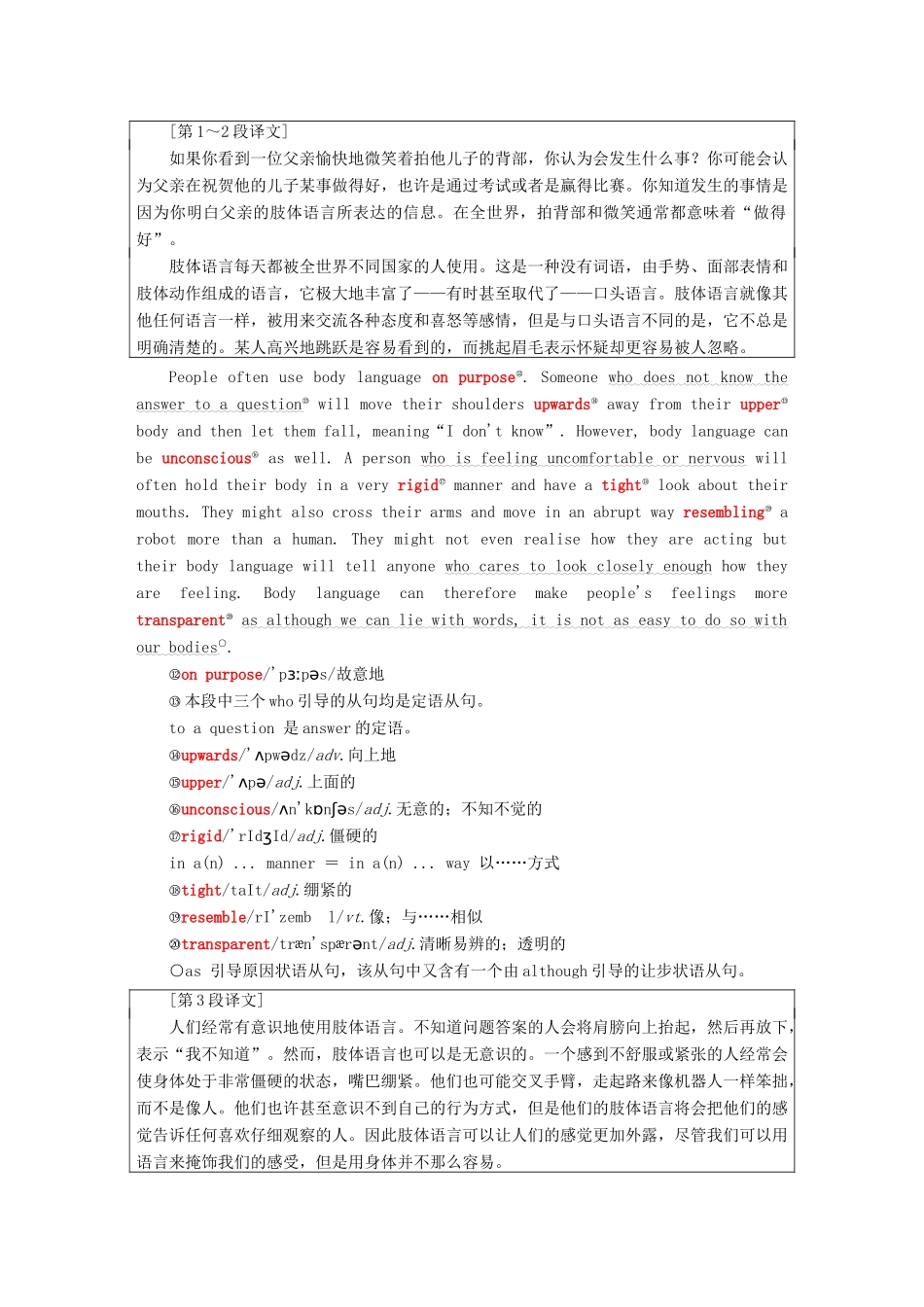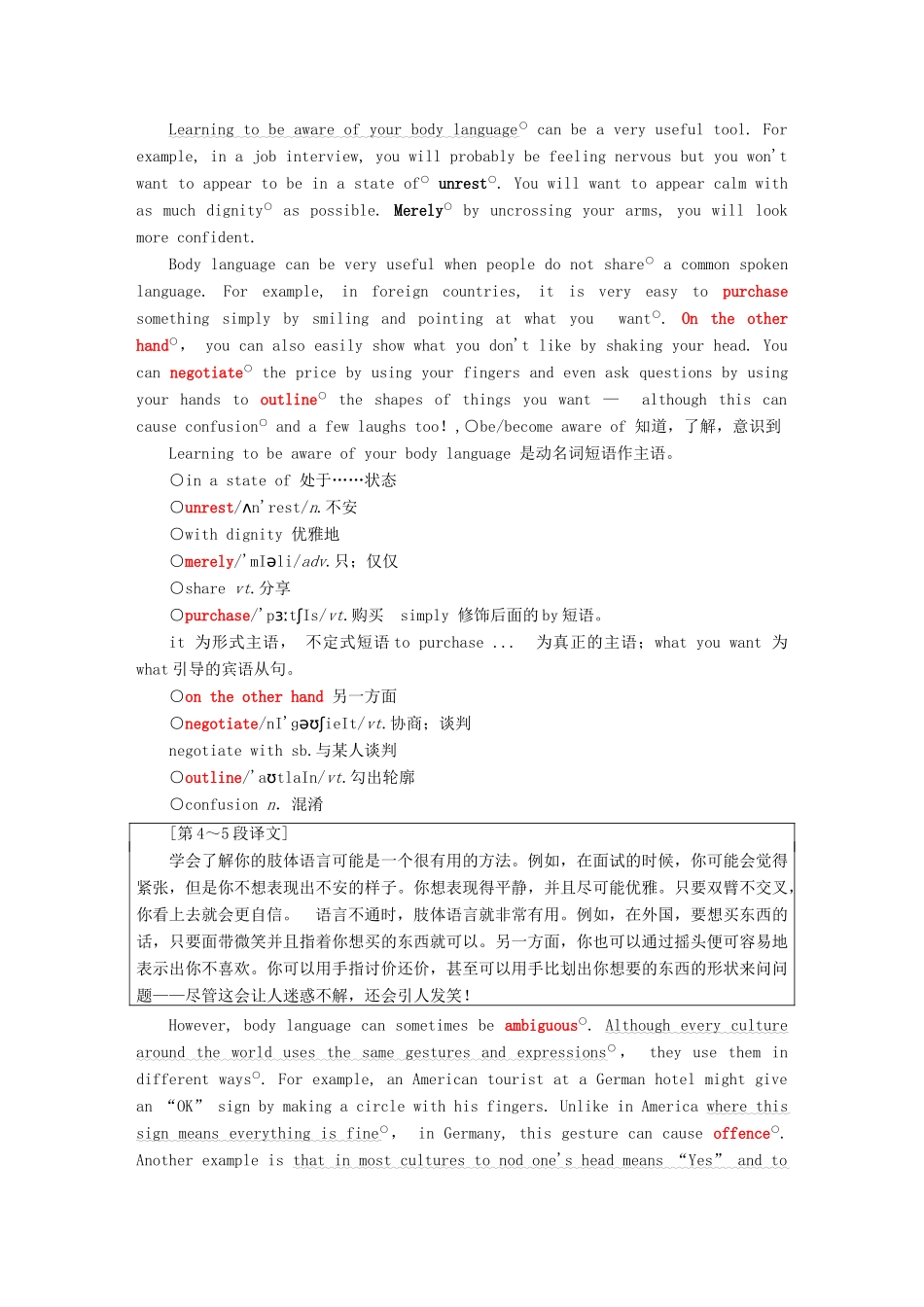Section Ⅲ Lesson 2 & Lesson 3 — PrereadingBODY LANGUAGE SPEAKS FOR ITSELFIf you saw a father patting his son on the back while smiling happily, what would you think was going on? ① You would probably think that the father was congratulating② his son on doing something well, maybe passing an exam or winning a race. You would know what was going on because you understood the message conveyed by the father's body language③. Across the world, a pat on the back and a smile usually means,“Well done”.Body language is used every single day by people of different nationalities all over the world. It is a language without words that consists of gestures, facial expressions and body movements that greatly add to — and sometimes even replace — spoken language④. Body language is used to⑤ communicate⑥ both attitudes and feelings from affection to anger just like any other language, but it differs from⑦ spoken language as it is not always explicit⑧. Somebody jumping for joy is easy to see while⑨ a raised eyebrow⑩ conveying doubt⑪ is easier to miss.①pat/pæt/vt. & n.轻拍;拍see sb. doing sth. 看见某人正在做某事pat sb. on the back 拍某人的背if 引导条件状语从句,主句中 would you think 是插入语。②congratulate/k n'ɡrætleIt/əʃʊvt.祝贺congratulate sb. on (doing) sth. 祝贺某人(做)某事 ③conveyed by ... 是过去分词短语作后置定语,修饰 the message。④that consists of ... spoken language 是 that 引 导 的 定 语 从 句 , 修 饰language。在这个定语从句中又包含了一个 that 引导的定语从句,修饰 gestures, facial expressions and body movements。两个 that 均在各自的定语从句中充当主语。⑤be used to do 被用来做 be used to doing 习惯于做⑥communicate ... to ... 表达,传达communicate ... with ... 与……交流/沟通⑦differ from 与...


